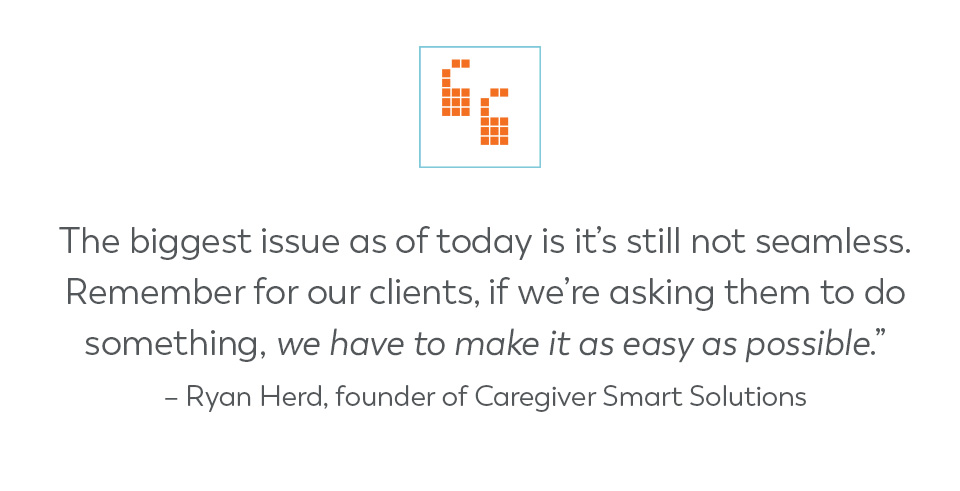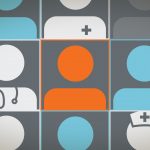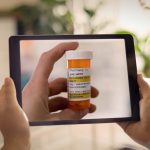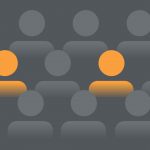The Unfolding Impact of Remote Patient Monitoring
Remote monitoring is becoming increasingly integral to empowering more independent living among seniors, and to enable efficiencies among shrinking ranks of professional caregivers. This blog and embedded podcast feature a conversation with Ryan Herd, founder of Caregiver Smart Solutions and a leading expert in smart home technology. Read and hear what Ryan has to say about the power and potential of remote monitoring; some shortcomings that still need to be addressed; and the impact this technology can have on provider staffing, productivity and improved quality of care.
If there’s one thing American seniors value, it’s their independence – including the ability to age in place.
According to AARP, 90% of Americans over age 65 want to stay in their current homes. And 80% believe their current residence is where they will live out the rest of their lives.
These feelings are so strong that a majority of seniors say they fear losing their independence more than they fear death, according to the Disabled Living Foundation.
Yet obvious challenges can exist with this dynamic, and the challenges can be magnified when a person lives alone. Studies by University of California, San Francisco, estimate that 27% of seniors live alone, and more than 40% say they feel lonely.
A related factor that gets frequent national attention is the risk of seniors falling and injuring themselves. This situation can be devastating if a senior lives alone and falls without anyone around to notice quickly. The CDC shares some sobering statistics:
- 36 million seniors fall each year
- 1 in 5 falls cause a serious injury, including broken bones and head trauma
- 32,000 senior deaths result each year from falls – the leading cause of fatal injury among adults
- Adult falls incur about $50 billion each year in medical costs
One solution to help seniors live more safely and independently is technology that can monitor them 24/7. Right now, at least three different types of monitoring technology exist:
- Wearable devices like smartwatches that can monitor pulse, oxygen levels, steps taken and more, and fall-sensing pendants (made famous by the line “I’ve fallen and I can’t get up!”).
- Apps for smartphones that ask for input from patients or their caregivers on what the patient is doing and how they are feeling.
- Motion sensors that can track daily living habits inside the home, such as walking around, time spent in bed, bathroom trips, refrigerator usage and more.
One shortcoming currently is that these technologies are not integrated. Even if a patient were using all three types of technology, those who are monitoring the results would have to review at least three different platforms that aren’t talking to each other.

Although seniors are growing more tech savvy, many still aren’t comfortable with operating apps that require regular input. Family caregivers may be able to provide the data if they live in the same household or contact their loved one daily, but that may not be the case for seniors living alone.
Even technology that is easy to use, such as a pendant that detects falls, may not get the usage or compliance necessary for reliable monitoring.
“When we talk about wearables within the home, our aging loved ones are not wearing them,” Ryan said. “And that’s just the dirty truth. It’s about dignity. It’s about independence. It’s hard enough to get them to wear it when they leave the house.”
One solution that requires no operational effort from seniors is a series of passive infrared sensors (called PIRs in the industry) placed strategically throughout the home. These sensors can discretely monitor the daily movements and habits of seniors to track normal patterns and note when behavior deviates from the norm.
Ryan explained: “Let’s say you call up your mom and say, ‘How are you doing?’ You’re always going to get that exact same response. ‘I’m doing fine.’ You know as well as I do there could be issues going on. She might’ve had an event, she might’ve fallen or whatever, but the reality is from a psychological standpoint, they don’t want to be a burden on us.
“Now, when we overlay technology that’s looking at habits, over time we can see changes. So, for example, if we have the right technology in there, on a normal day, let’s say overnight mom goes to the bathroom twice, that’s normal. Green check mark. That’s great. But now all of a sudden you realize that she’s going four or five times overnight for a couple of nights in a row. Could be an issue.”
In addition to the sensors, artificial intelligence (AI) comes into play in recognizing trends and deviances. AI can help connect the dots to note when something seems amiss.
“For example, if mom’s opening up the refrigerator regularly, she’s probably eating and drinking regularly,” Ryan said. “She also should be going to the bathroom. I mean, we’re a closed loop system. That’s easy to monitor. Those are the kinds of things that we’re looking at. Now, if mom is not drinking enough, dehydration is one of the first precursors of a fall. We don’t want that to happen. So, things like that, that’s how AI can actually help.”
Remote monitoring not only is a comfort for family caregivers, it is becoming a necessary tool for professional providers of home-based care to offer the highest quality and augment their stretched and often shrinking workforce.
“The average for in-home services is twice a week, four hours a day,” Ryan said. “For bonus points, do you have any idea how many hours are in a week? There are 168 hours. So, minus those eight hours that our in-home services are there, there’s still 160 hours. That’s where the power of a system like this comes in.
“What it really comes down to is no matter where our aging loved ones live, the problem is once they close that front door, it’s a black hole,” Ryan continued. “You have no idea what’s going on behind that door. By having smart technology in the environment, sensors that are discretely looking at what’s going on and monitoring the habits – it’s giving the doctor, it’s giving the care staff the tools to see into the black hole beyond that door.”
Remote monitoring also provides opportunities to help care teams work smarter. “Leveraging smart technology gives you the ability to spread out your workforce,” Ryan said. “And what I mean by that is on one hand you are monitoring Mrs. Smith for the family. You’re monitoring them 24/7, 365. You’ve got their back. So, it’s also not as important that Nurse Mary gets to Mrs. Smith’s house at exactly 12 o’clock. It’s okay if she’s there at 12:15. It smooths out that labor issue. More importantly, prior to getting there, she could look at the dashboard or the app and know exactly how Mrs. Smith has been doing … and have the data to back it up.”
Smart technology for the home is still in its infancy and offers exciting possibilities for the future. But no matter how sophisticated the technology becomes, it’s all about making the human experience more enjoyable.
“Our number one philosophy for remote monitoring is this – to retain our loved one’s independence and dignity and enable them to live on their own for as long as possible,” Ryan said.










